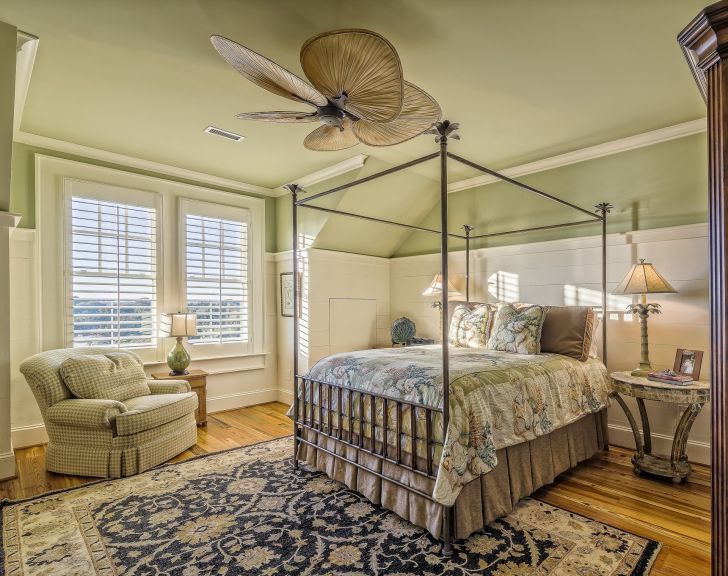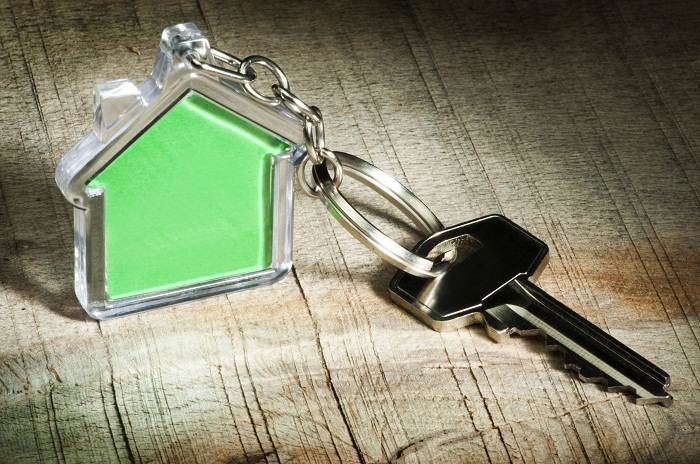Do you want to know more about how to profit from owning a halfway house? A halfway house is available as a living environment and it is there to support people during their recovery. This living environment helps people transitioning out of mental health treatment, incarceration, drug, and alcohol rehab.
For people who have just finished treatment, being around places they know, friends, and family can create stress and make it harder to get better. Moving from treatment to a halfway house could give them the needed time and distance from these things.
So, how to profit from owning a halfway house? Usually, halfway houses aim to offer safe and healthy place, and feel like being part of a family. Even though each house is set up a bit differently, they all concentrate on people supporting each other. Also, it can be great for helping them find more services to help their recovery journey.
How Many Types of Recovery Housing?
Before telling you more about how to profit from owning a halfway house, it is better to know the types of this housing. Halfway houses help people recover from problems with drugs or alcohol. There are also other kinds of recovery housing like sober homes (also called sober living homes) and Oxford Houses, which are a bit different from halfway houses.
Sober homes are different from halfway houses. They’re often connected to a treatment center where people stay as patients. Besides, they might even have programs for intensive therapy nearby. Some treatment centers like the Desert Hope Treatment Center and the Greenhouse Treatment Center offer these kinds of homes.
This can be really helpful because it lets patients smoothly move from one level of care to another, all within a similar system. As the result, this can make their recovery more steady. Some owners focus on how to profit from owning a halfway house provide this kind of housing to anyone who needs support, even if they haven’t had recent treatment.
Oxford Houses are another option. They’re houses where people live together and agree not to use drugs or alcohol. People who live there will manage these homes, not by professionals or an organization like most halfway houses.
Everyone who lives there pays an equal share of the costs like rent and utilities. The special thing about Oxford Houses is that there’s no set time for how long people can stay. So, people can live there for as long as they need. On average, people stay for about a year.
How to Profit from Owning a Halfway House
A lot of the people who manage halfway houses used to live in one themselves. They want to help the community because they know how important these places are. But running a halfway house doesn’t have to be just about helping others – it can also be a way to make a living. There are different ways on how to profit from owning a halfway house. The two most common ways are getting money from the government through grants and collecting rent from the people who live there.
Government Grant
How to profit from owning a halfway house from the government, known as federal grants. This can be a complicated process, but there are professionals who specialize in getting these grants for businesses.
Each grant program from the government has its own rules, and it might be available to specific types of organizations. For instance, there could be grants to start a sober living home in rural areas or grants for halfway houses in certain communities. Since these grants cover a wide range of situations, finding and getting them can be a full-time job. Apart from federal grants, there might also be grants from the state or local community.
Grants are great because they don’t have to be paid back. Instead, the organization just gets the grant money for a certain period. Sometimes, they can apply for the same grant again the next year, so they have a steady source of income. In other cases, they have to keep searching for new grants to keep getting money. Either way, these grants help the organization keep the facility running.
Resident to Pay Rent
Apart from grants, a lot of halfway houses also ask their residents to pay rent. How to profit from owning a halfway house can vary. It depends on where the house is located, the services offered, and the residents themselves.
For example, some houses might charge less or even nothing for people who don’t earn much, while those who earn more could be asked to pay more. If you’re the owner, you’d need to figure out how much rent you need to charge to keep the house running well, along with the money you got from grants.
Halfway houses offer services to the people who live there, but they’re also like places to live. Many residents would be spending money on housing if they weren’t staying in the halfway house, so they usually have a budget for that.
However, these houses are often cheaper than regular rentals because they get some money from government grants, and many residents can’t afford to pay full rent. The monthly cost can vary a lot, from as low as $400 to as high as $10,000, depending on where the house is and what it offers. This means you can choose what kind of sober living facility you want to run.
How To Start Profitable Halfway House
Halfway houses are transitional, not permanent, residences. The length of stay varies based on the level of care. Some houses might encourage a minimum and maximum stay to track progress, while others could have no maximum limit.
Unlike Oxford Houses, most halfway houses have staff members on site. Some might offer social workers or behavioral health staff, and clinical services like counseling might be available. Additionally, some rooms are shared by a few individuals, while others have larger rooms with bunk beds for multiple residents.
Halfway houses are partly funded by government grants, usually at the state level. Residents typically provide their own toiletries and food, but staff can help them access government funds for other needs. Besides, Work and volunteering are important aspects of halfway house life. Depending on the house’s level of care, residents might work off-site to cover expenses. In other cases, their schedule could be filled with mandatory activities, making outside work or volunteering less feasible.
Medication policies vary. Over-the-counter medications might be restricted due to misuse potential, but prescribed medications could be allowed if they support recovery. Each house will have its own clear policy on medications.
Halfway houses are often located in residential areas, allowing residents to become part of the community. Remember that each halfway house operates differently, so it’s crucial to learn about their specific rules and services before moving in.
Rules of Halfway House
Every halfway house has its own rules to ensure safety, sobriety, and personal development of the residents. Some common rules include:
- Abstinence: Residents must not use drugs or alcohol. It is possible if there are random tests to check this.
- Alcohol and Drug-Free Property: Banned items in the halfway house are drugs, alcohol, and related stuff.
- Employment: Some residents must have jobs, with a portion of their wages going towards rent. Unemployed residents might need to attend job-related activities.
- Meeting Attendance: Twelve-step meetings and working with sponsors.
- Conduct and Curfew: No physical fights, dishonesty, and breaking curfew.
Visitation rules are also in place to ensure security. Violating rules can lead to serious consequences, affecting release conditions for those who were in prison or leading to eviction from the house.
How to profit from owning a halfway house depends on cost, and the cost varies based on the level of care, services, and local housing prices. Government grants help cover costs, so residents pay rent weekly or monthly. Some may be referred by rehab facilities, courts, or seek it themselves. Certain states might limit access to parolees.
For assistance with alcohol or substance misuse, American Addiction Centers can help find treatment and explore options like halfway houses. Reach out to admissions navigators for guidance on recovery and recovery residences.
Halfway house requirements establish rules about visitation, mainly to ensure the safety of residents and staff. These rules might specify the number of visitors allowed at once and how guests need approval from staff. Minors can usually visit adult relatives at a halfway house if they’re accompanied by a parent or guardian.
Breaking Rules in a Halfway House
Breaking rules in a halfway house can lead to significant outcomes. For instance, halfway houses funded by the government often cater to individuals released from prison, and rule breaches can affect their release conditions. In different halfway houses, there might be a set limit on rule violations or warnings before a resident leaves.
Usually, the government grants fund the halfway houses partly, but at the state level. Residents typically provide their own toiletries and food, but staff can help them access government funds for other needs. Work and volunteering are important aspects of halfway house life.
License
Typically, you do need a license to open a halfway house. The specific licensing requirements can vary depending on the location and jurisdiction in which you plan to operate the halfway house. These requirements are often set by local and state government agencies.
Licensing ensures that the facility meets certain standards in terms of safety, services provided, and overall suitability for supporting individuals in recovery. It’s important to research and understand the specific licensing regulations and procedures in your area before opening a halfway house.
This way will ensure that you are in compliance with the law. Consulting with legal experts or professionals who are knowledgeable about local regulations can help guide you through the licensing process.
Location and Changes
Begin by buying or renting a property. Your financial situation might determine this decision, but often local authorities like counties, cities, and townships need you to own the property before they approve a halfway house in a residential area. It’s important to build relationships within the community as resistance from the “Not in My Backyard” mindset can be a challenge. Once you identify potential properties, get them inspected by a certified building inspector to avoid any future regrets.
Unless the house you acquire was previously a halfway house, you’ll likely need to make modifications to adhere to zoning laws that determine the allowed number of residents or any limits you’ve set for the capacity. If you’ve registered your halfway house as a nonprofit and filed articles of incorporation, now is the time to reach out to community members who might be willing to contribute financially or assist with repairs, modifications, furnishing, and other needs.
Secure Specialized Insurance
Acquire insurance coverage specifically tailored for the halfway house. Ensure that it covers the property, its contents, and includes liability protection to safeguard your personal assets from potential lawsuits. A standard homeowner’s policy is insufficient for the unique needs of a group home.
Employ Trained Staff
Having a trained staff in place before residents arrive is advantageous. Experienced employees can assist in creating an operations manual and establishing rules, regulations, and policies for both residents and staff. Conduct thorough background checks on all staff members, from counselors to housekeeping personnel.
Develop an Operations Manual
Create your operations and policy manuals using templates provided by government agencies like the U.S. Department of Health and Human Services or nonprofit websites. You can also adapt documents from other halfway houses to suit your specific requirements. Ensure that all documents are legally reviewed.
Establish Financial Management
If your funding comes from criminal justice agencies, your contract will outline payment details. If you rely on nonprofit grants or private donations, regular pledges and fundraisers may help sustain your halfway house. Maintaining accurate financial records is essential for ongoing support and seeking additional sponsors.
Implement Structured Programming
Residents transitioning from prison, jail, or rehab need structured routines to reintegrate into society. Develop well-defined schedules that encompass mandatory chores, group counseling, individual therapy, recreational activities, job search, and life skills training. Include social events and personal time, especially for residents pursuing education or hobbies.
How Much Profit from Owning a Halfway House
How to profit from owning a halfway house involves various considerations, including location, number of residents, property costs, utilities, and pricing for clients. Sober homes can be profitable, but some focus solely on making money, leading to poor living conditions for residents.
Quality halfway houses are often situated in quiet rural areas, providing a conducive environment for recovery. Despite the potential for profit, the primary motivation should always be helping residents reintegrate into society as productive individuals. Unfortunately, some facilities prioritize quick earnings over genuine support.
Generally, these houses aim to provide affordable housing and support, rather than huge profits. Government grants can help cover operational costs, and houses may charge residents rent or fees based on their income.
Operating expenses vary and may include staffing, rent, utilities, maintenance, insurance, and taxes. Success goes beyond finances and requires a commitment to quality services, community engagement, and adherence to legal regulations.
A well halfway house offers multiple bedrooms in a peaceful rural location, away from urban distractions. Such a setting is ideal. How to profit from owning a halfway house can reach $40,000 annually per client, which could translate to up to $10,000 per month. It’s important to always remember your original motivation for running a halfway house.
While financial considerations are a part of it, they should never take precedence. Unfortunately, there are numerous facilities solely focused on quick profits, disregarding the well-being of their residents. While there can be financial benefits, running a halfway house should be driven by a desire for positive social impact. Balancing the financial aspect with the well-being of residents is crucial in this important endeavor.
Conclusion
By understanding on how to profit from owning a halfway house, you can conclude that owning a halfway house can bring in good money, but the focus shouldn’t only be on the financial gains. The main goal is to help individuals become stronger by gradually becoming more independent without relying on drugs or alcohol.
The key is having a genuine desire to aid people in their recovery. While the financial aspect is a positive, it shouldn’t be the main reason for running a halfway house. Creating a safe place for recovering addicts is the primary aim. The financial benefit should come secondary to this, not the main driving force.
Unfortunately, there are many facilities that don’t prioritize their clients’ well-being and that is one of the problems with halfway houses. We believe that there’s a strong demand for high-quality sober-living homes. These homes offer supervised support to addicts, helping them transition to independent living without substance abuse in a safe environment.
FAQ – How to Profit from Owning a Halfway House
Here are Frequently Asked Questions (FAQ) about how to profit from owning a halfway house:
Can owning a halfway house be profitable?
Yes, owning a halfway house can be profitable. However, the primary goal should be providing support for individuals in recovery, not just financial gain.
What factors contribute to the profitability of a halfway house?
Factors such as location, number of residents, services offered, and facility quality play a role in determining profitability.
What kind of location is ideal for a profitable halfway house?
A rural setting away from city distractions can be appealing to residents seeking recovery, potentially contributing to the profitability of the house.
How much can I earn from owning a halfway house?
Earnings can vary widely based on factors like the number of clients, services provided, and location. Some owners report earning around $40,000 per client annually or up to $10,000 per month.
Should financial gain be the main priority when owning a halfway house?
No, while profit is a consideration, the main focus should always be on helping individuals recover and reintegrate into society as productive members.
How can I ensure that my halfway house prioritizes residents’ well-being over profit?
Maintain a strong commitment to providing quality services, a supportive environment, and adhering to ethical standards in the treatment of residents.
Are there specific regulations for owning a halfway house as a for-profit business?
Yes, regulations can vary based on location and jurisdiction. It’s important to research and understand the legal and licensing requirements in your area.
Can government grants contribute to the profitability of a halfway house?
Yes, government grants can help cover operational costs, making it more financially viable to provide quality services to residents.
What are some potential expenses I should be aware of as a halfway house owner?
Operating costs may include staffing, rent or mortgage payments, utilities, maintenance, insurance, and taxes.
Is there a balance between profit and social impact when owning a halfway house?
Absolutely. Striking a balance between financial gain and creating a supportive, nurturing environment for residents is crucial for long-term success.
Remember, owning a halfway house involves a responsibility to individuals seeking recovery. Prioritize their well-being while considering the financial aspects of your endeavor.
Who pays for sober living homes?
The cost of sober living homes is typically covered by the residents themselves. Residents are expected to pay rent or fees to live in the sober living home. The amount they pay can vary based on factors such as the location, services provided, and the individual’s income.
Some individuals in recovery might receive financial assistance from government programs, insurance, or other sources to help cover the cost of staying in a sober living home. Some sober living homes might also offer scholarships or reduced rates for those who cannot afford the full cost.
Sources:
- How Do Halfway Houses Get Paid?
- Halfway Houses: What Is a Halfway House?
- How Much Profit Can Be Made From A Halfway House?
- How to Open a Halfway House in a Residential Community




